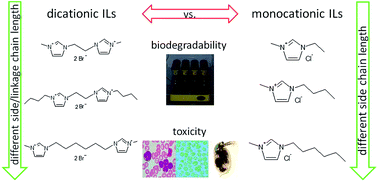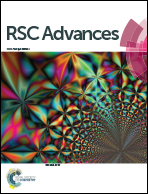Toxicity and biodegradability of dicationic ionic liquids†
Abstract
Ionic liquids (ILs) formed by multivalent cations are generally of higher thermal and electrochemical stability, which makes them attractive for use in high-temperature applications. Whereas the influence of structural elements on the physicochemical properties of dicationic ILs (DILs) is well established, such systematic investigations on their ecotoxicity and biodegradablility are still lacking. The present study investigates the influence of the dicationic structural elements on these characteristics and addresses the question whether already established structure–activity relationships of common ILs can be applied to DILs. Therefore, a set of 10 DILs with different linkage chain length, terminal alkyl side chain length, linkage chain polarity and head groups were synthesized and studied in several biodegradation and toxicity tests. The results showed that the acute toxicity was in many cases below the levels observed for monocationic ILs. However, none of the DILs could be degraded within the performed biodegradation experiments. Hence, DILs are a potential less toxic alternative to monocationic ILs, but further work on their design is necessary.


 Please wait while we load your content...
Please wait while we load your content...